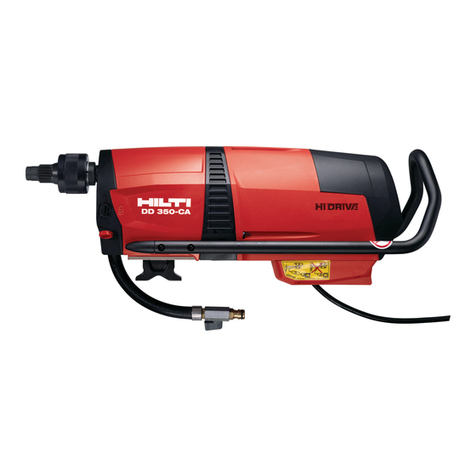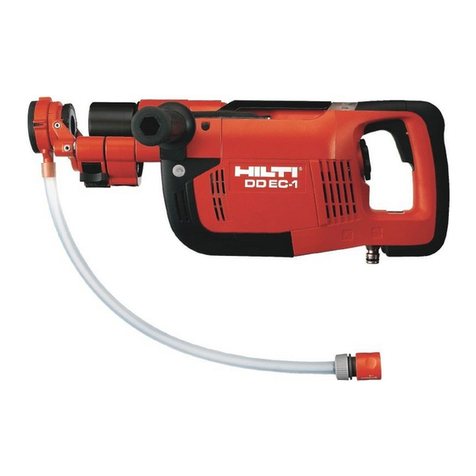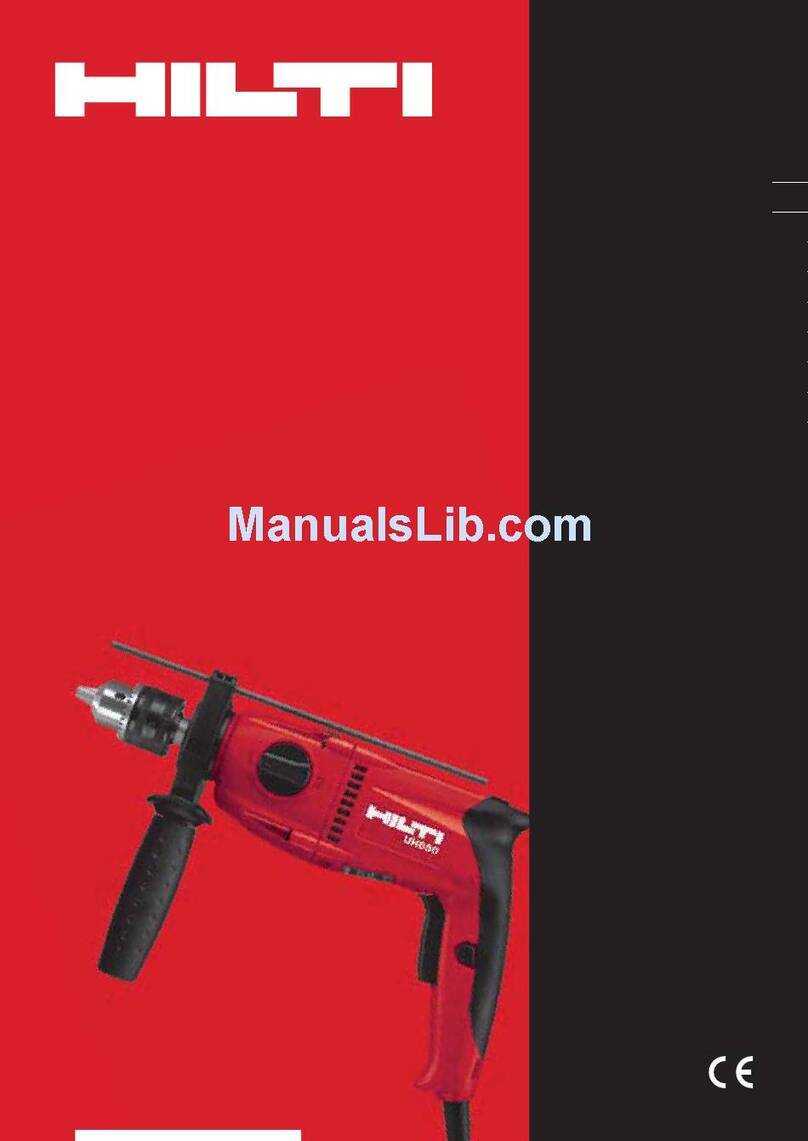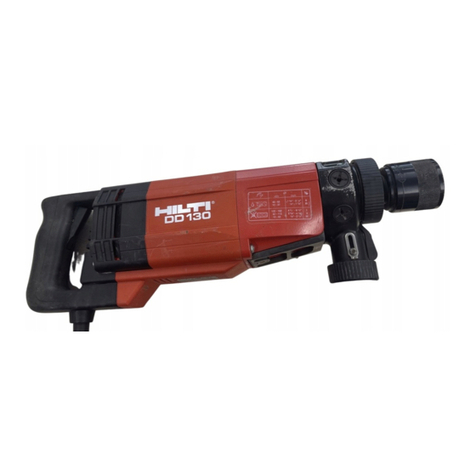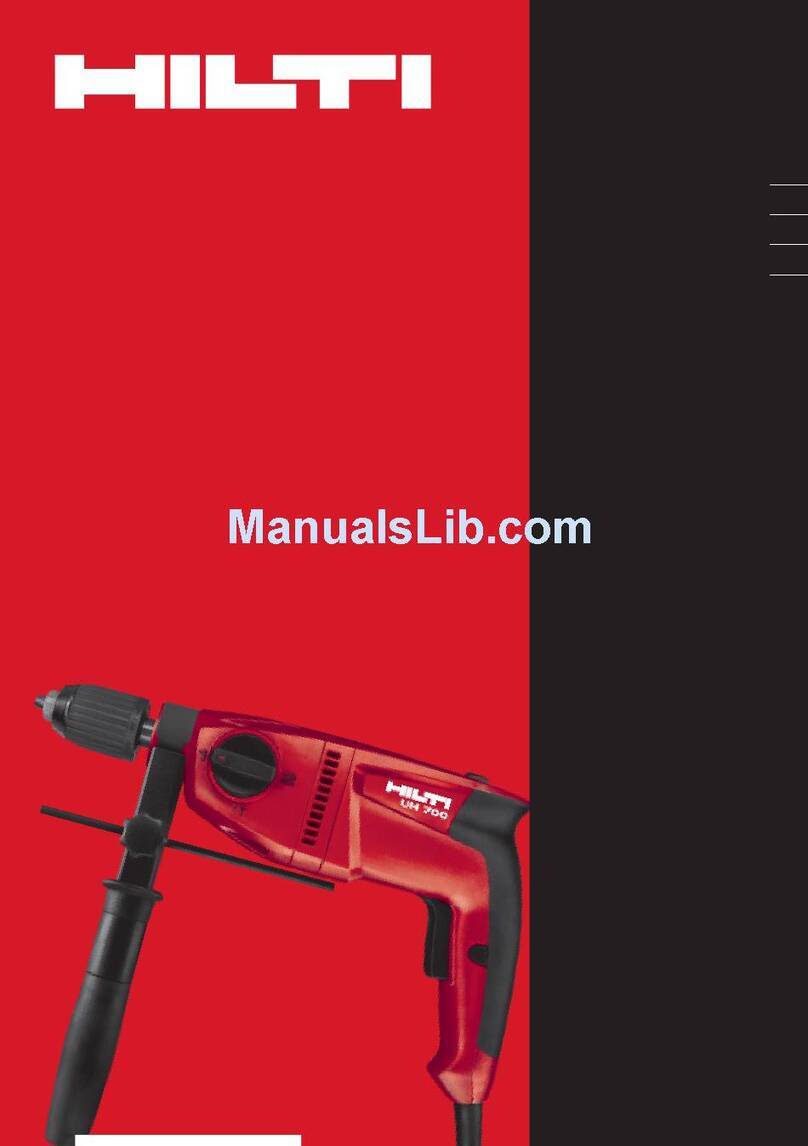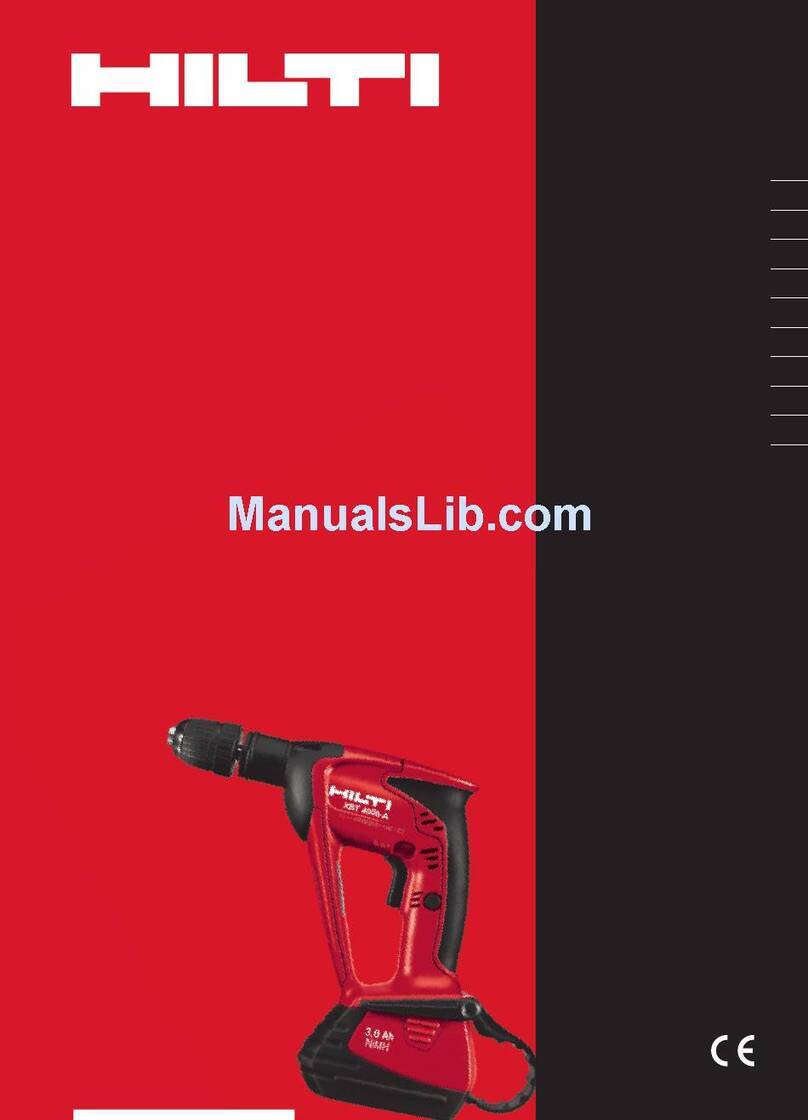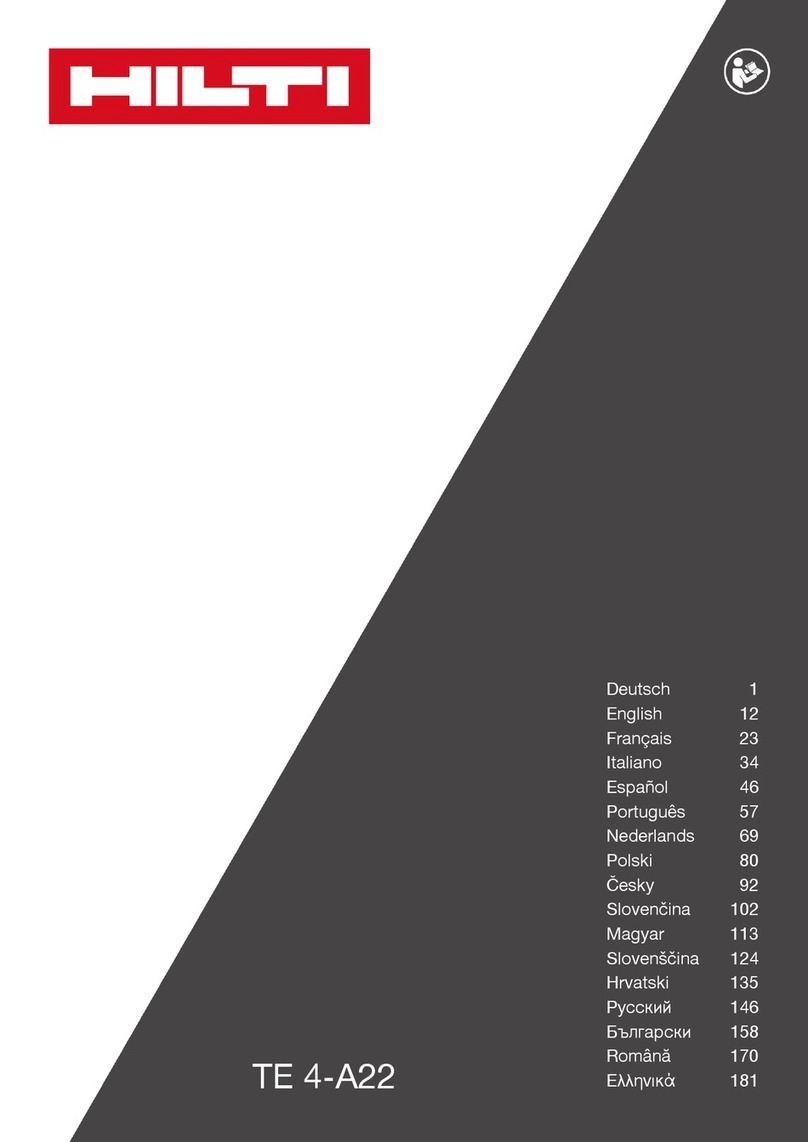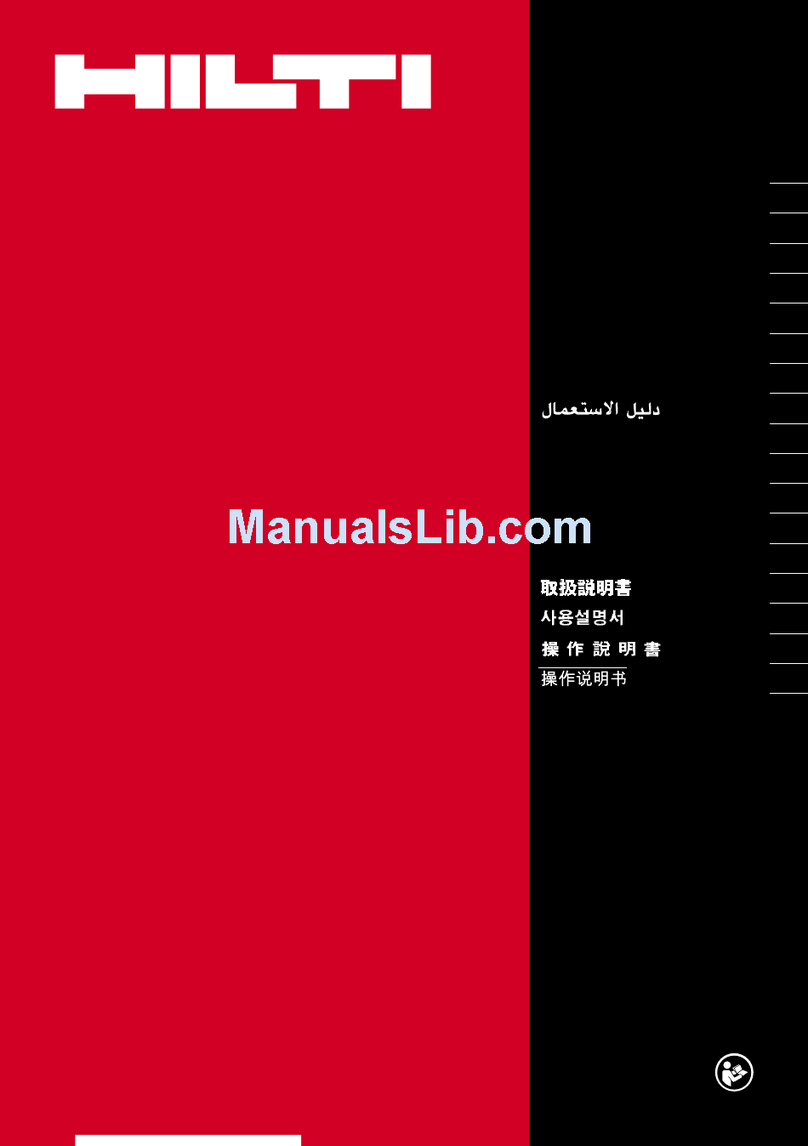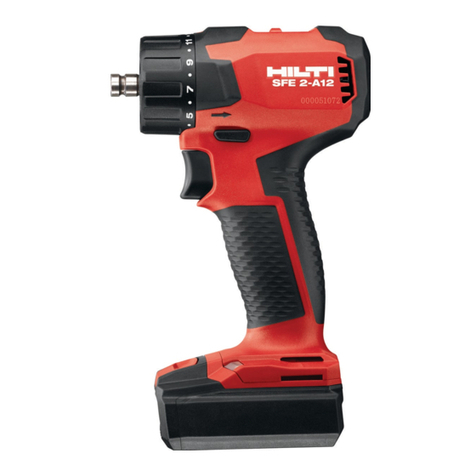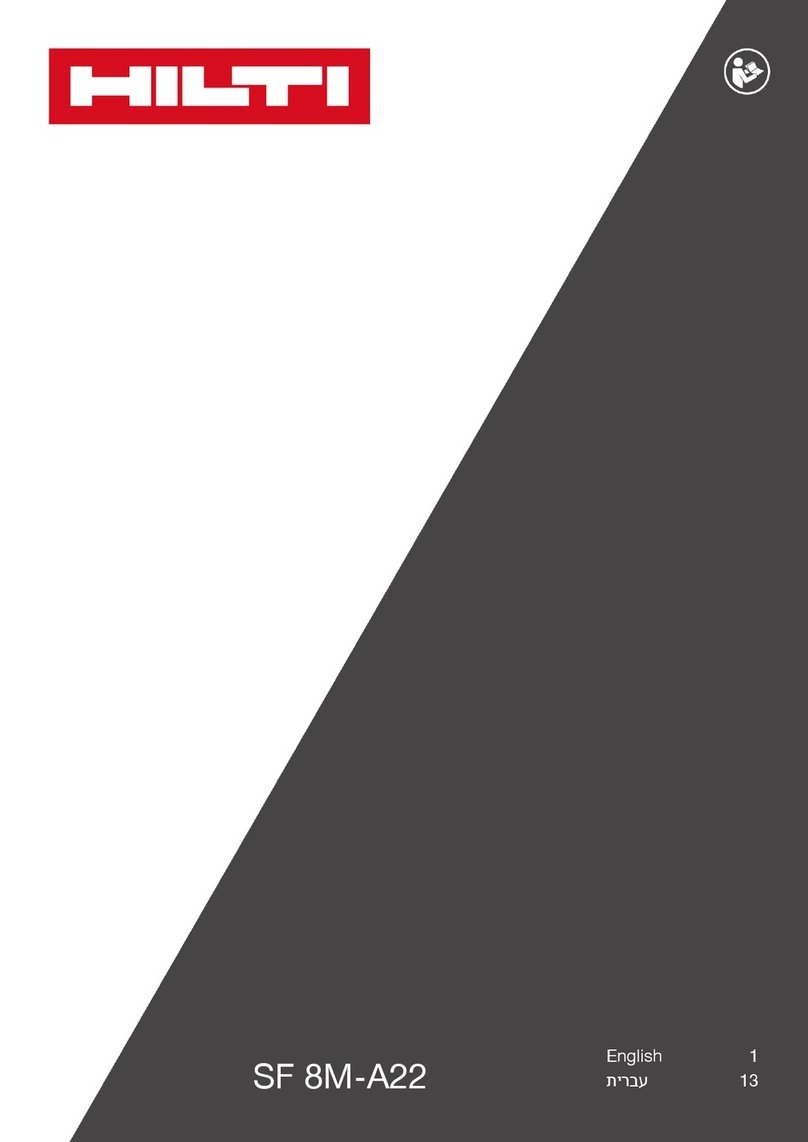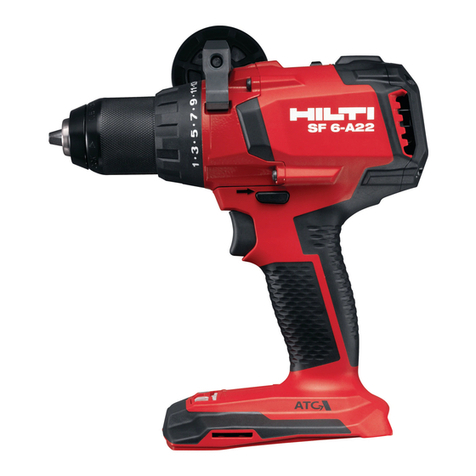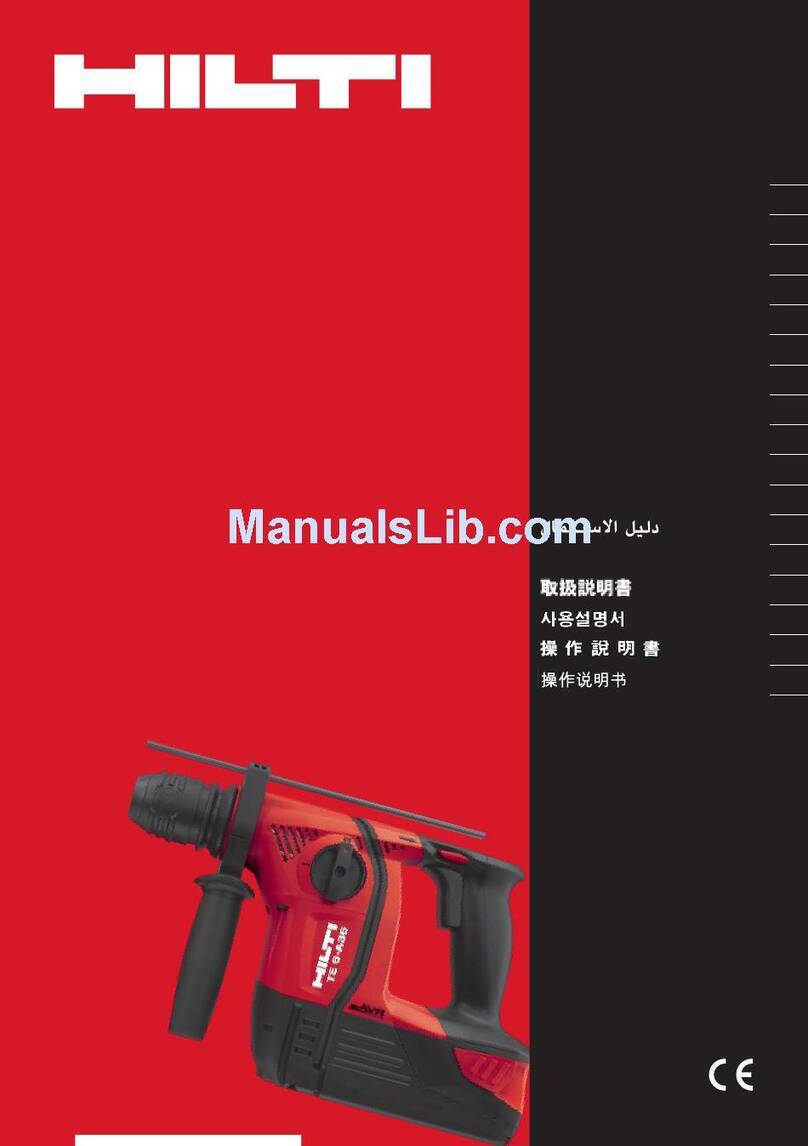2
en
Location of identification data on the tool
The type designation, item number, year of manufacture
and technical status can be found on the rating plate on
the tool. The serial number is located on the left side of
the motor housing. Make a note of this data in your oper-
ating instructions and always refer to it when making an
enquiry to your Hilti representative or service depart-
ment.
Type:
Serial no.:
2. General safety rules
2.1 WARNING!
READ AND UNDERSTAND ALL INSTRUCTIONS
Failure to follow all instructions listed below, may result
in electric shock, fire and/or serious personal injury.
SAVE THESE INSTRUCTIONS.
2.2 Work Area
Keep your work area clean and well lit.
Cluttered benches and dark areas invite accidents.
Do not operate power tools in explosive atmospheres,
such as in the presence of flammable liquids, gases,
or dust.
Power tools create sparks which may ignite the dust or
fumes.
Keep bystanders, children, and visitors away while
operating a power tool.
Distractions can cause you to lose control.
2.3 Electrical safety
Do not abuse the cord. Never use the cord to carry the
tool. Keep cord away from heat, oil, sharp edges, or
moving parts. Replace damaged cords immediately.
Damaged cords may create a fire.
A battery operated tool with integral batteries or a se-
parate battery pack must be recharged only with the
specified charger for the battery.
A charger that may be suitable for one type of battery
may create a risk of fire when used with another battery.
Use battery operated tool only with specifically des-
ignated battery pack.
Use of any other batteries may create a risk of fire.
2.4 Personal safety
Stay alert, watch what you are doing, and use com-
mon sense when operating a power tool. Do not use
tool while tired or under the influence of drugs, alco-
hol, or medication.
A moment of inattention while operating power tools
may result in serious personal injury.
Dress properly. Do not wear loose clothing or jewel-
ry. Contain long hair. Keep your hair, clothing, and
gloves away from moving parts.
Loose clothes, jewelry, or long hair can be caught in
moving parts.
Avoid accidental starting. Be sure switch is in the
locked or off position before inserting battery pack.
Carrying tools with your finger on the switch or insert-
ing the battery pack into a tool with the switch on invites
accidents.
Remove adjusting keys or wrenches before turning
the tool on.
A wrench or a key that is left attached to a rotating part
of the tool may result in personal injury.
Do not overreach. Keep proper footing and balance at
all times.
Proper footing and balance enable better control of the
tool in unexpected situations.
Use safety equipment. Always wear eye protection.
Dust mask, non-skid safety shoes or hearing protection
must be used for appropriate conditions.
2.5 Tool Use and Care
Use clamps or other practical way to secure and sup-
port the workpiece to a stable platform.
Holding the work by hand or against your body is unsta-
ble and may lead to loss of control.
Do not force tool. Use the correct tool for your appli-
cation.
The correct tool will do the job better and safer at the
rate for which it is designed.
Do not use tool if switch does not turn it on or off.
A tool that cannot be controlled with the switch is dan-
gerous and must be repaired.
Disconnect battery pack from tool or place the switch
in the locked or off position before making any adjust-
ments, changing accessories, or storing the tool.
Such preventive safety measures reduce the risk of start-
ing the tool accidentally.
Printed: 07.07.2013 | Doc-Nr: PUB / 5071285 / 000 / 00
